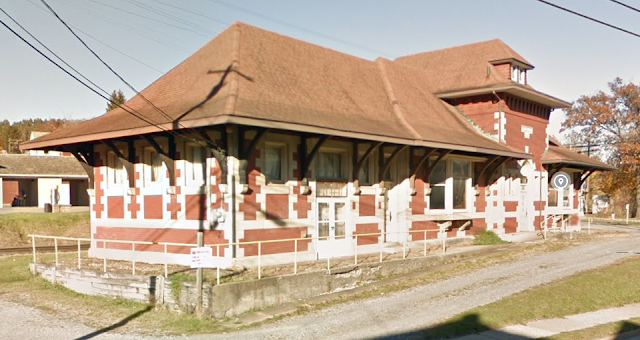Power: (
Satellite)
"Units and In-Service Dates: Unit 1: 816.3 MW (1971), Unit 2: 816.3 MW (1971)" [
gem]
This is a new view of a power plant.
 |
Shane's Snapshots posted
W.M. Robinson the boat working at Mitchell Power Plant at MM 113 on the Ohio! Thanks to Bradley for the pic! |
The plant has installed a dry fly ash handling system that stores what can't be sold to cement companies in a lined landfill. But there is still the problem of how to deal with the wet ash storage that is on site, and how to fund it. Rate increases have become a political football in Kentucky. [
wvpublic] West Virginia has approved the rate increase, but Kentucky has not. Scanning the search results, it seems every they plan to run until 2028, and some think it should run until 2040.
While looking at the satellite image, I noticed that there were more, and bigger, coal piles than is normal for a power plant. I wondered if this was a mine mouth power plant. I did find that the facilities on the east side of Energy Highway are Marshall County Coal.
The power plant is on the left and the coal mine is on the right in this street view.
If it was a mine-mouth power plant, then there must have been a disagreement because the coal mine now has a big barge loading facility. Note that it has two loading docks. I included the Kammer Plant land in the lower-left because I have seen evidence that a power plant used to be there. Or maybe Mitchell wasn't a mine-mouth power plant. Maybe the power plant and mine are collocated because this happens to be a flat spot along the river.
When one does a Google search for "marshal coal mine," one learns that there is an underground coal mine in Colorado that is burning. Also, Illinois has a Marshall County that has a lot of coal mines. But a search with "marshall coal mine wv" was productive.
Anonymous member
posted three photos with the comment: "Photos of Unit 1 at Mitchell Power Station in New Eagle PA that flew apart after over speeding. The other is the 300MW unit 3 at Mitchell that produced 288MW after powering all auxiliary systems. The plant closed down in 2013."
 |
| 1 |
 |
| 2 |
 |
| 3 |
%20Power%20Plant%20Pictorial%20_%20Photos%20of%20Unit%201%20at%20Mitchell%20Power%20Station%20in%20New%20.png) |
| Comments on the anonymous post |
This photo is the evidence that there used to be two power plants here. The one in the background is this Mitchell Power Plant. The one in the middle is gone. The facility on this side of the abandoned power plant is the Marshall barge loading facility. Note that there is the
Ohio Valley Transload facility on the Ohio side of the river.
The transload facility on the Ohio side is also labelled
Murray Energy Corporation. It can both load (left side) and unload barges. But I don't see any decent rail service nor significant storage capacity. So I don't know what the purpose of this facility is.
When I was checking out the CSX/B&O railroad to confirm that this plant uses just barges for coal, I did find some rail service. But it is tank cars.
Harsco is now called enviri. I found evidence that they do something with coal piles. But I don't know what they do with them nor why they would need tank cars.
.jpg)








.png)
.png)




































%20Power%20Plant%20Pictorial%20_%20Photos%20of%20Unit%201%20at%20Mitchell%20Power%20Station%20in%20New%20.png)



